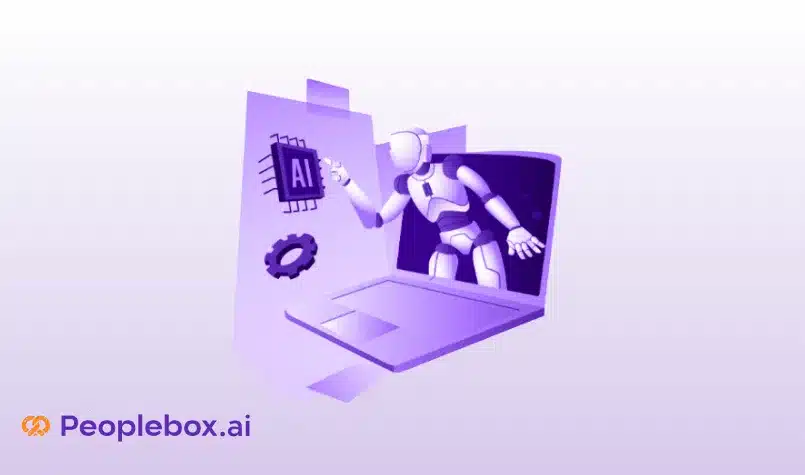In this week’s section of #ExpertSpeak, we talked with Wayne Turmel, Co-founder and Product Line Manager, Remote Leadership Institute.
He has been writing about how to develop communication and leadership skills for almost 20 years now. He has taught and consulted at both fortune 500 companies and Startups all around the world.
For the last 8 years focussing on the growing need to communicate effectively in remote and virtual environments. Marshall Goldsmith has called Wayne “one of the truly unique voices in leadership.”
In the interview (full video attached at the end of the article) we discussed about:
- How has Covid-19 changed the communication?
- How can managers communicate effectively with their teams?
- How to avoid video burnout when communicating remotely?
- How can teams strengthen communication between them?
How has communication changed due to Covid-19 pandemic?
In some ways obviously communication has changed, while in other ways it has not. I mean, we still communicate the same way we always have.
We send a message, we hope the message was heard and interpreted and we hope people take action on it. That hasn’t changed, we still need to make sure that we understand each other, we need to make sure that communication is two-way.
What has changed is that we’re using different tools perhaps than we did before and the ratio of which tools we use to communicate have changed. We need to be very mindful of how we communicate.
In ‘long distance leadership’, the first rule is, think what you need to do as a leader or as a team and then give it some thought to how you’re going to do it.
How can managers communicate effectively in Covid times?
The first thing is as a leader as a communicator understand what is it you’re trying to achieve and then apply the right tool to that particular message or task, be mindful of what technology we’re using. Use the right tool for the kind of message you want to communicate.
The second thing, I think is we need to get good at using the tools and technology. Also, the number one factor in whether a team adopts a technology as part of their workflow is if the boss uses it himself.
So if you as the leader are resisting using SharePoint or you’re still attaching documents to emails instead of using the shared drive, why are you shocked that people aren’t using the shared drive?
And the third thing is at the beginning err on the side of two way communication. Remember that communication is message sent, message received, message interpreted. If you’re only communicating one way, you know, the message was sent. So an email by itself is very often not communication its data transfer.
Is there a thing as ‘over-communication’ in remote work?
So, you know unfortunately, we didn’t really have a chance to do build a communication plan before Covid.
It was like all of a sudden we woke up one morning and went okay, everybody’s working from home. And, so a lot of us are trying to fix the boat while it’s in the water!
So, start with talking to people about what do they need. What are you trying to accomplish as the manager? What do you need from them? What do they need from? Create a plan, work the plan for a bit and then be prepared to rework it.
And how can workers overcome ‘Zoom fatigue’?
It’s physically draining to be on camera all the time! So, what’s happened is we’ve got this tool and like we do with every tool humans have ever invented, the pendulum has swung way over here. And we’re using it perhaps more or not in the optimum way.
Shorter more frequent communication seems to work better.
In a lot of remote circumstances, long meetings where everybody goes through everything tends to be very draining and soul-killing.
So, ask your employees what suits them the best. And don’t make every communication a video communication. Choose video calls only when required, for example one on one meetings.
How important are one on one meetings between managers and employees in remote setup?
Well, one on one’s are critical. Right, they just are and it didn’t matter whether you were building the pyramids or building software.
The one on one communication is critical because not everybody is willing to share things in a team meeting not everybody is willing to be forthcoming with their questions without that conversation.
If I don’t know who you are, I’m less likely to trust you. So the one-on-one conversations are critical.
Effective One on One Meetings
We built a software that automatically schedules, lets you set agenda, take notes, exchange feedback and track actions – all in one place.
How can teams communicate better among themselves while working remotely with all the stress around us?
A team collaborates with each other and the whole sum is greater than the individual parts and that conversation particularly in a virtual world needs to be consciously facilitated and allowed to happen.
So things like virtual happy hours, having the whole team get together and taking time to update each other, not just on what’s our work, but asking icebreaker questions like how’s your family doing, how are you holding up through all of this, adds a personal touch, and it is really quite important.
Also, as a team member, understand that your manager undoubtedly is finding themselves right now fielding more questions, answering more emails, dealing with more stuff, than they ever did before.
Being mindful of this can help the team members take initiatives to sort things on their end before taking each thing to the manager in these testing times.







